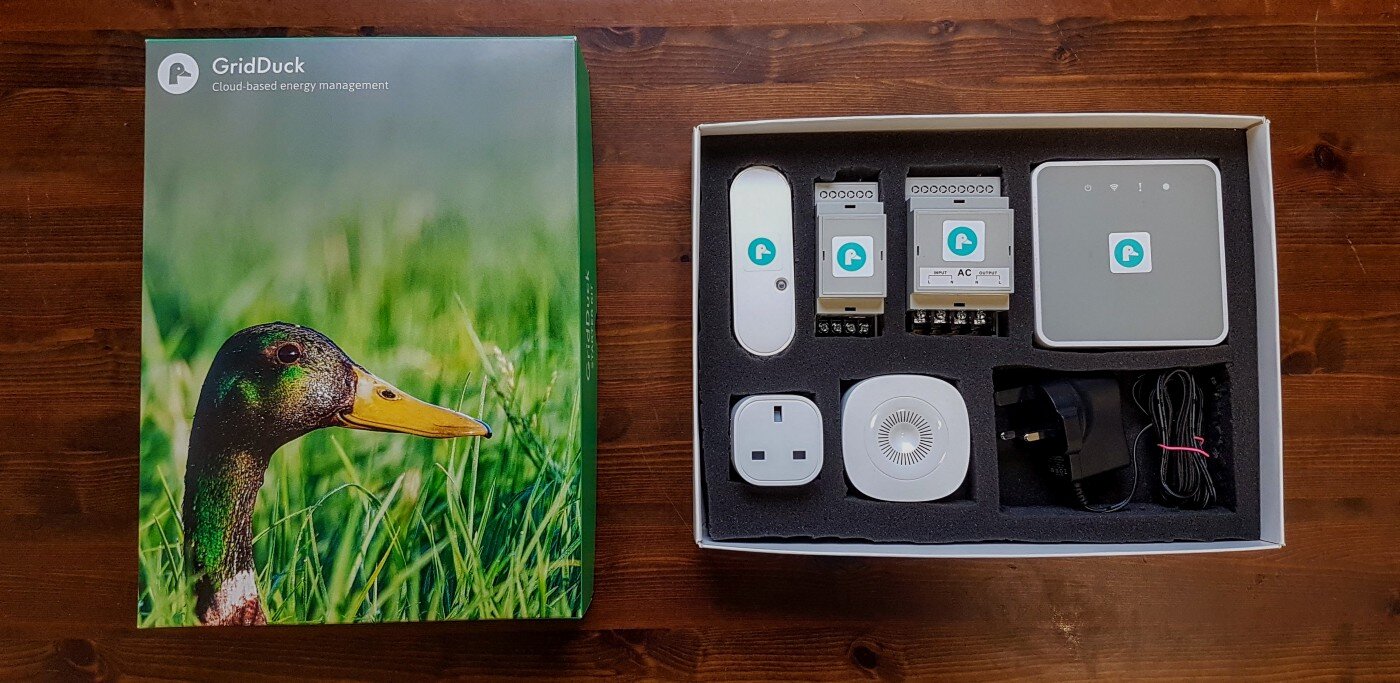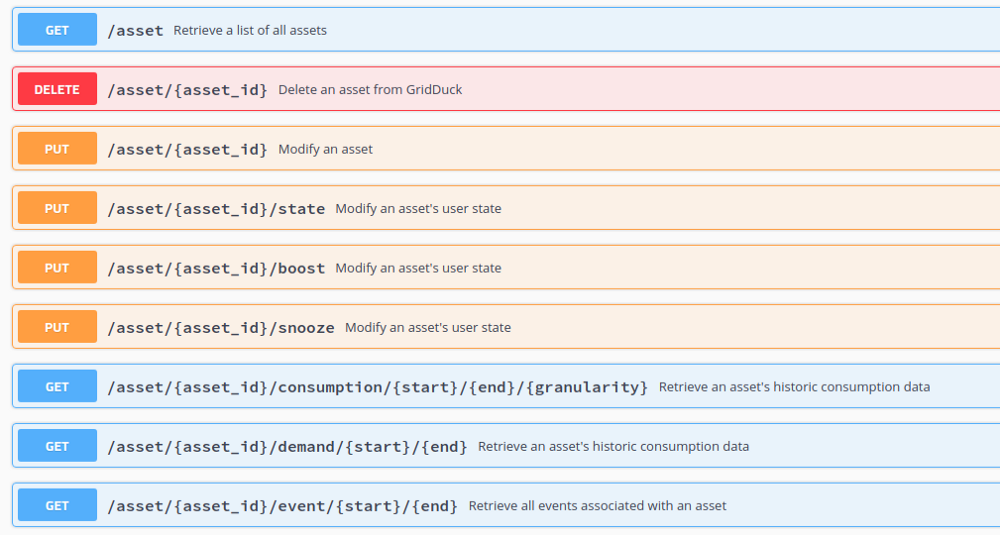Beta Launch — Tech Details
It’s been a long year of R&D! To our immense relief we’ve just shipped our first beta trial kits to interested clients in energy consultancy, infrastructure and demand response.
We’ve also launched our new online dashboard and API to enable facilities managers and consultants to collaborate over energy resource management, and to enable energy aggregators to implement demand-side response, including frequency response, at a huge scale.
Our Hardware
The trial kits includes:
3G Gateway
A heat & humidity sensor
A UK smart plug
16A DIN relay
30A DIN relay
Inline smart cable
The relays enable managers to set time switches and rule-sets, as well as enabling sophisticated demand-side response schemes.
The heat sensor enables managers to set zone-based HVAC rules so that heating can be tuned room-by-room.
By bringing together wireless control hardware from manufacturers across the globe, controlled by software proudly written by our team in London, GridDuck is releasing an integrated hardware package which stands to enable a seismic shift in the rush towards the smart grids of the future.
Our Software Stack
The online dashboard has been carefully designed to support tiered organisation-level control over assets with individual user permissions. Senior members of an organisation can set broad time switch settings asset-by-asset across their portfolio, while a worker at a local site could boost or snooze a heater or cooling system for a set interval depending on immediate requirements.
Read-only access for sites and assets can then be shared with third-party organisations, to enable consultants to easily assist in optimising energy consumption.
Most exciting of all, assets deemed to be interruptible can be made available, within set limits, to third party demand response aggregators who can then implement demand-side response schemes, without any additional hardware spend.
Furthermore, our fully functional RESTful API implements the OAuth 2.0 authorisation framework to make it easy for clients to integrate GridDuck with whatever level of sophistication they require.
On the server side we’re utilising modern cloud technologies such as serverless, NoSQL architecture on the one hand and traditional relational databases and container-based servers on the other to achieve our three key user requirements:
Real-time monitoring & control with instant access to aggregated data
Predictable and low costs per asset
Unlimited scalability
What’s Next?
As we’re gathering our feedback from our beta customers we’re working on bugs, UX improvements, documentation, and preparing for our all-important penetration test.
Subject to a successful outcome from penetration testing we should be gearing up to launch readiness in the next few months. Watch this space!




